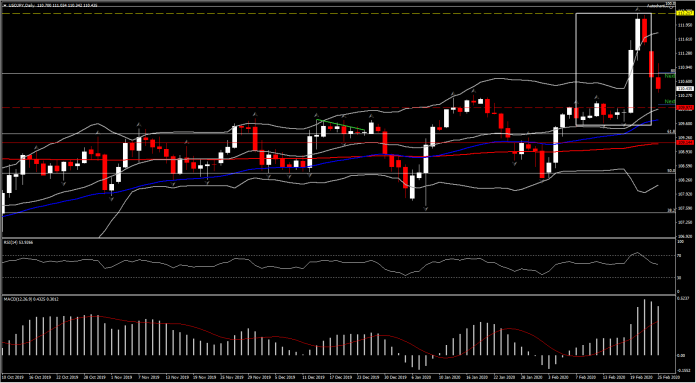As we have already discussed, the market’s immunity to the COVID-19 virus risk fell apart in February. So far it has been proven that the virus’ uncertainty over the extent and duration of the weakness leaves stock markets vulnerable.
Stocks remain weaker in Europe and Asia, while in the US there has been a small a bounce in risk appetite which helped US equity futures to recover slightly. Gains have faded a bit this morning, but the futures remain in the green — the USA30 and USA500 are 0.5% firmer while the USA100 has climbed 0.8%.
Hefty losses yesterday (Dow -3.6%, S&P 500 -3.4%, NASDAQ -3.7%) came amid news that the spread of the COVID-19 virus was widening, notably into Europe where Italy registered the highest number of confirmed cases outside of China. Investors were spooked, fleeing stocks for the safety of bonds, eliminating global equity gains for the year. The Nikkei dropped -3.3% playing catch up from Monday’s holiday. European bourses are about -0.65% lower, though Italy continues to underperform with a -1.1% decline. Treasuries are trading cautiously.
Based on the John Hopkins coronavirus map, the chart below represents the reaction of stocks markets on the virus’ development:

When we have news reporting stabilization of affected virus cases we can see stabilization in global stocks , while negative news creates a sell off in the markets.
Safe havens on the other hand react quite interestingly. The Yen has picked up bids as stock markets in Europe sank and USA500 futures pared gains. USDJPY ebbed back towards yesterday’s 110.33 low, while AUDJPY has fallen into three-month low terrain. EURJPY and other yen crosses also declined.
The interesting part though, and the reason why we emphasize in Yen is the fact that the last few days, there has been speculation in some market narratives that the Yen’s status as a safe haven currency was in decline, though the prevailing price action suggests otherwise.
The Yen may no longer be the funding currency it once was in the current world of low interest rates, and thereby not subject to bouts of sharp short-squaring driven gains during times of panicky risk aversion, but Japanese investors, who invest heavily in foreign assets in search of yield, could remain apt to rotate capital back home during times of stress.
This should maintain the Yen’s status as a haven currency, despite clearly bearish fundamentals (in terms of growth and monetary policy expectations).
The question is whether these levels are too rich to elicit much buying, or if safe haven demand will dominate. Meanwhile, the COVID-19 virus remains in focus.
Click here to access the Economic Calendar
Andria Pichidi
Market Analyst
Disclaimer: This material is provided as a general marketing communication for information purposes only and does not constitute an independent investment research. Nothing in this communication contains, or should be considered as containing, an investment advice or an investment recommendation or a solicitation for the purpose of buying or selling of any financial instrument. All information provided is gathered from reputable sources and any information containing an indication of past performance is not a guarantee or reliable indicator of future performance. Users acknowledge that any investment in Leveraged Products is characterized by a certain degree of uncertainty and that any investment of this nature involves a high level of risk for which the users are solely responsible and liable. We assume no liability for any loss arising from any investment made based on the information provided in this communication. This communication must not be reproduced or further distributed without our prior written permission.



















